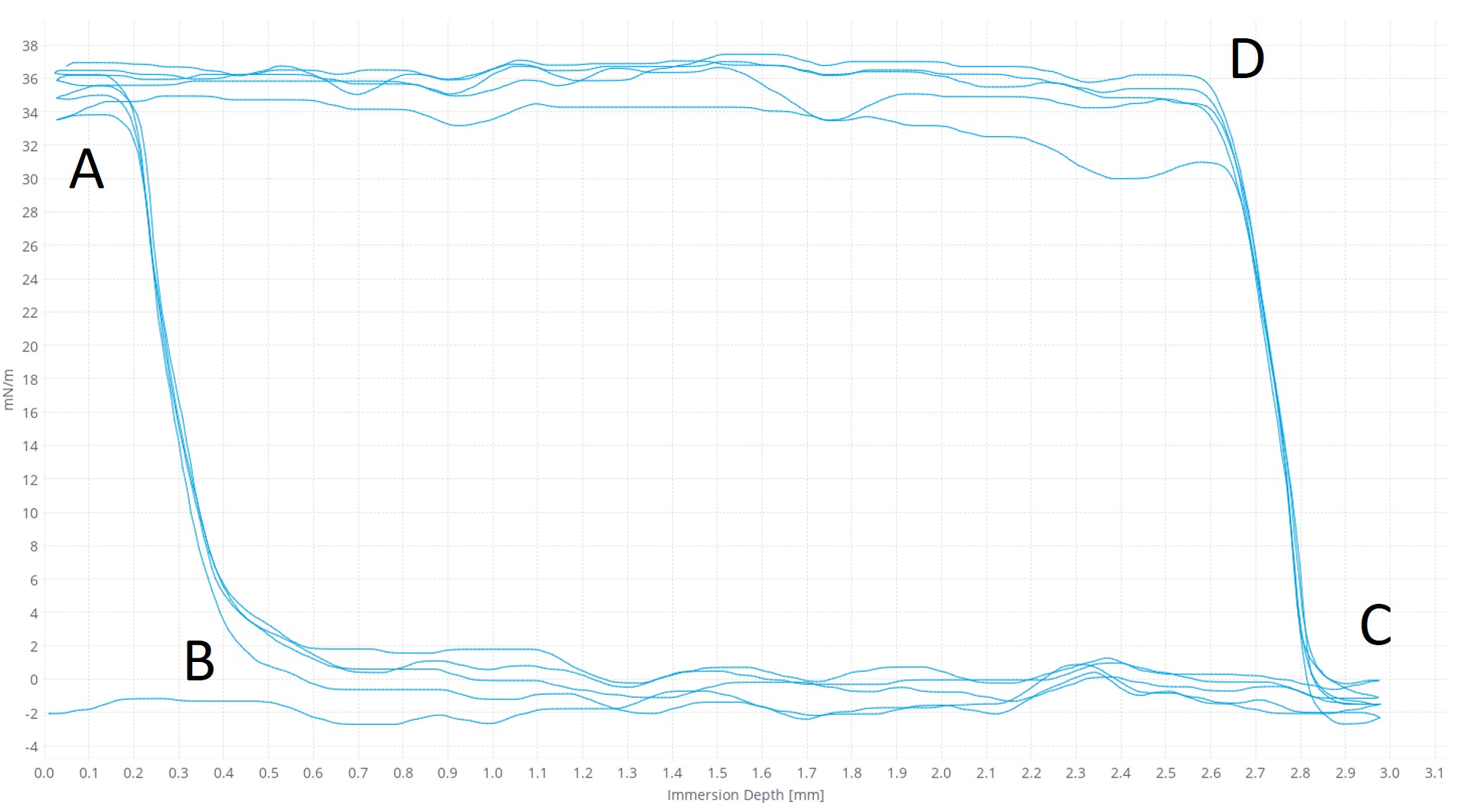The contact angle measurements on single fibers are used in different industrial areas to characterize the adhesion and wetting behavior of the fibers. Fiber wettability is important for example in the textile industry when studying water repellency of textiles or in cosmetics when studying the treatments of human hair e.g. with shampoos, coloring, etc. One of the biggest applications today is the production of fiber-reinforced composites. The composites are typically a mixture of different fibers such as carbon, glass, or Aramid (Kevlar) and resin. For the mechanical performance of the composite, the adhesion between fiber and the matrix is of utmost importance.
The wettability of the reinforced fiber is important to ensure good adhesion between the fiber and the matrix. If the wetting is incomplete, there might be interfacial defects, and thus reduces adhesion. To ensure good wettability, the surface free energy of the fiber needs to be high which then leads to a low contact angle between the fiber and the polymer solution. High surface energy typically indicates that there are more polar groups on the surface. Thus., the water contact angle measurements are often used to determine the properties of the fiber. The lower the water contact angle, the higher the surface free energy of the fiber, and the better the adhesion.
The contact angle of the fiber is commonly measured with the Wilhelmy plate method using a force tensiometer. There is a possibility to use optical methods as well but as the diameter of reinforcing fiber is often very small (typical diameter for carbon fiber is 7 μm), it would require extremely large magnification and still be quite challenging. Use of the Wilhelmy plate method is often easier although measuring such a small fiber requires an active anti-vibration table and the cabinet to be used.
In the Wilhelmy plate method, the fiber sample is hung on the balance of the tensiometer and brought into contact with the test liquid. The tensiometer measures the advancing and receding contact angles formed by the liquid on the fiber. When the fiber comes in contact with the liquid, the change in forces acting on the fiber is detected and the tensiometer registers the current position as zero depth of immersion. As the solid is pushed into the liquid, the changes in mass are recorded and forces acting on the solid can be detected. The tensiometer calculates and automatically subtracts the effects of the buoyancy force and the weight of the probe. The only remaining force measured by the balance is the wetting force.
The graph below shows the typical measurement curve for fibers. At point A, the fiber touches the surface of the liquid. As the wetted length is small, the meniscus is formed quickly and there is a fast drop of force in the curve. The area from points B to C is used for advancing angle determination. The curve is horizontal since there is no significant buoyancy affecting the fiber. When the samples stage starts to move to another direction (in point C) the fiber is pulled up and again there is a meniscus forming (from point C to D). The area from point D to A is used for receding contact angle determination.

Discover why contact angle is essential for adhesion, coatings, and quality control. Learn how surface wettability impacts product performance.
Discover why PFAS-free coatings are needed, the challenges they present, and key strategies for developing high-performance alternatives.
At the heart of droplet formation are two key molecular forces: cohesion and adhesion.
Contact angle measurements provide a golden standard for evaluation of surface properties for quality control.
Contact angle is the angle a droplet forms in contact with a solid surface. Thermodynamically, it is a balance between cohesive and adhesive forces.
This blog post discusses the importance of adhesion in the lithography process and how to predict adhesion with contact angle measurements.
HMDS is used to render the surface of silicon more hydrophobic and thus to match better with the chemistry of the photoresist.
This blog post explains the concept of RCA cleaning and it's relation to contact angle.
Contact angle measurements can be used to evaluate the cleanliness of silicon wafers.
